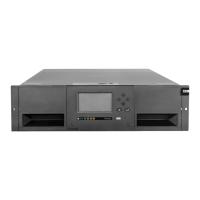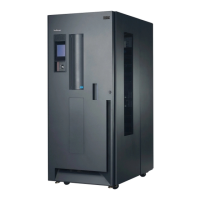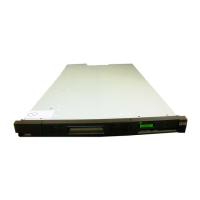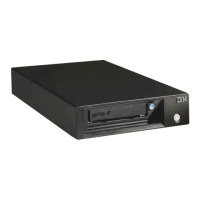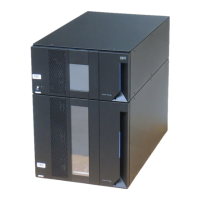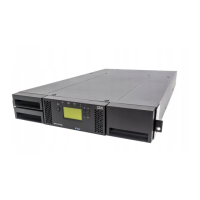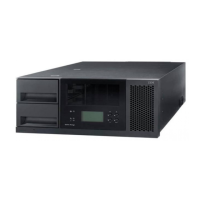when you add Capacity On Demand (CoD) or High Density Capacity on Demand
(HD CoD) storage, add or remove logical libraries, or change logical library storage
allocation. ALMS also reduces downtime when you add expansion frames, add or
remove tape drives, or change logical drive allocation.
ALMS provides the following capabilities:
v Dynamic partitioning (storage slot pooling and flexible drive assignment)
v The ability to add or remove storage capacity to any host application
v The ability to configure drives or to configure storage capacity without taking
the library offline
v Virtual I/O slots (always enabled) to automatically manage the movement of
cartridges between I/O slots and storage slots
The sections that follow describe the capabilities of ALMS.
Storage slot pooling
Storage slots are a shared resource in the TS4500 tape library.
The Advanced Library Management System (ALMS) allows logical libraries to be
added or deleted without disrupting operation. All storage slots are pooled
(available on a first-come, first-served basis) to each logical library based on
cartridge insert operations. They are a shared resource such that changes to the
capacity allocation for each logical library can occur without downtime or
administrator involvement. The minimum logical library has a name and can be
thought of as a file folder that has no contents. Drives are assigned to the logical
library from the Drives page of the TS4500 management GUI. Cartridges are
assigned to the logical library based on their volume serial (VOLSER) numbers and
by using one of the following methods, which are listed in priority order:
v VOLSER ranges
v Software application move from the I/O station (based on the source application
that issued the command)
v Manual assignment by an operator by using the TS4500 management GUI
The primary and backup copies of VOLSER assignment and physical location of
cartridges are stored in nonvolatile random access memory (NVRAM).
Transparent addition or removal of storage capacity
The addition or removal of logical library capacity in the TS4500 tape library is
transparent to any host application.
With the Advanced Library Management System (ALMS), you can change the
quantity of storage slots accessible to all logical libraries by adding licensed
capacity or by adding physical capacity. The change is transparent to each host
application because the value in the Maximum Number of Cartridges field on the
TS4500 management GUI is not impacted by changes to the quantity of storage
slots. The additional storage slots are new candidates for cartridges to be moved to
upon insertion. This behavior allows the following two tasks to be performed
independently and in either order:
v An administrator or service task to change the licensed or physical capacity of
the library
v An administrator task to prepare their application to have access to more
cartridges in their respective logical libraries by increasing the Maximum Number
Chapter 1. Overview 45
